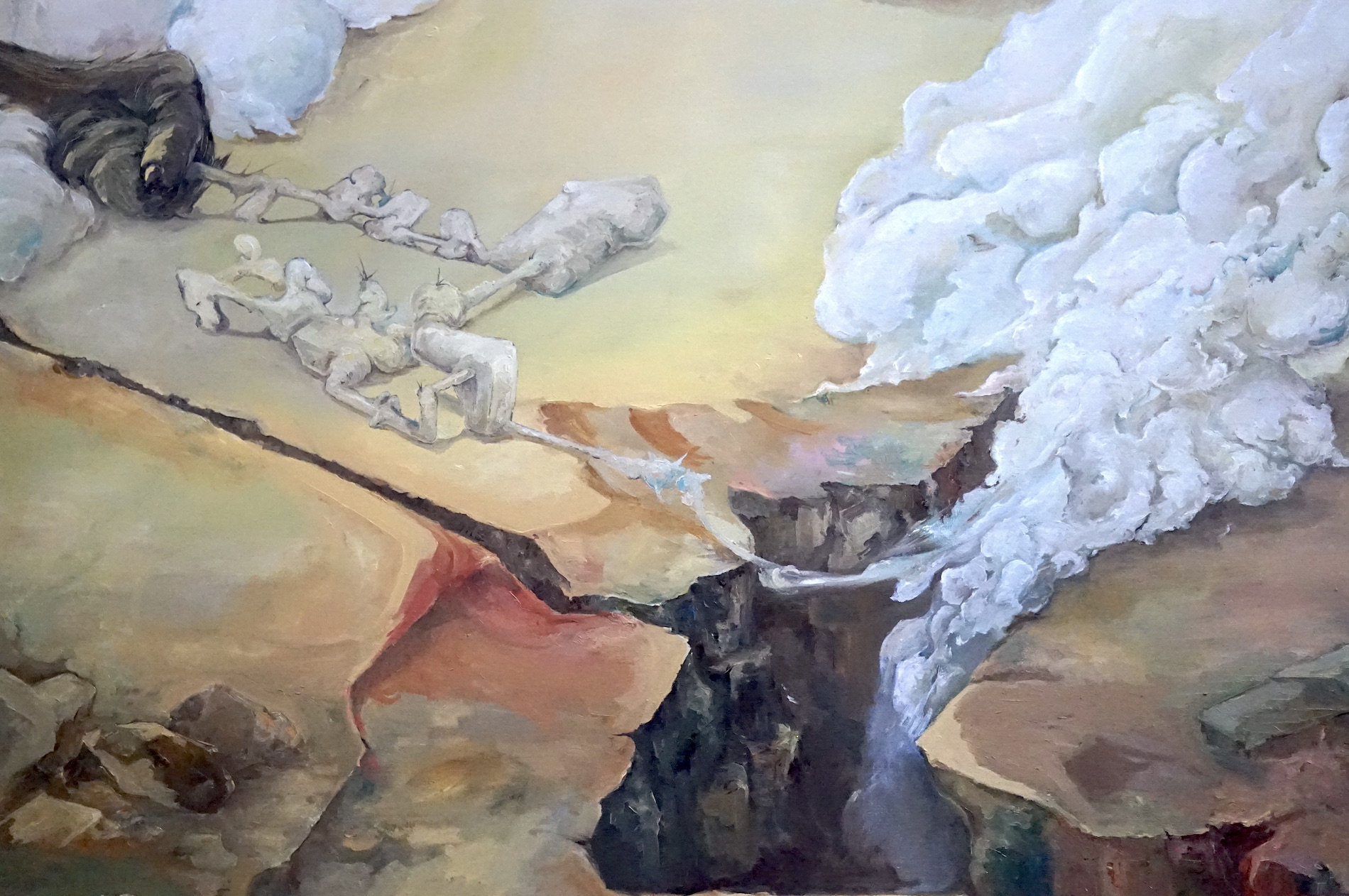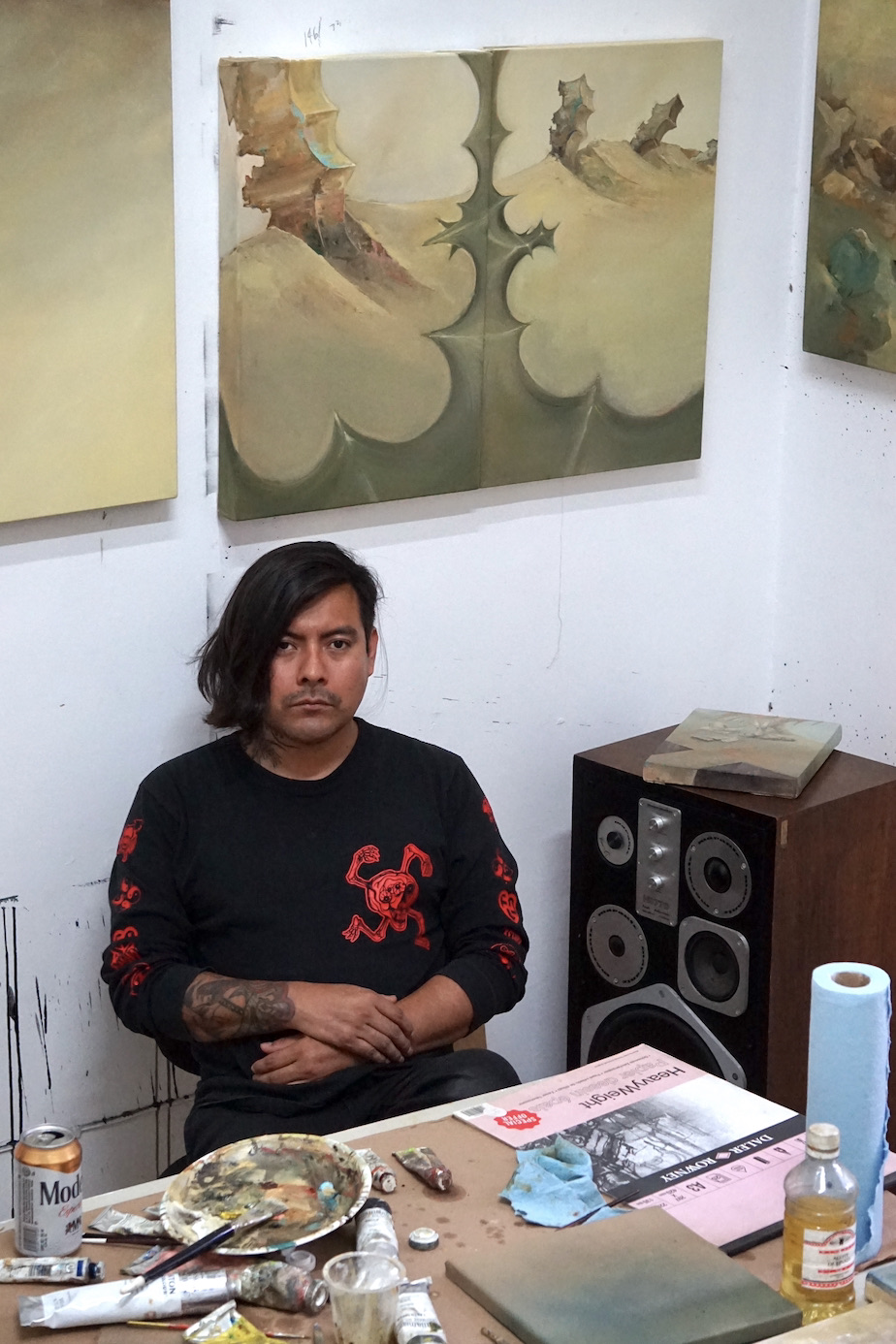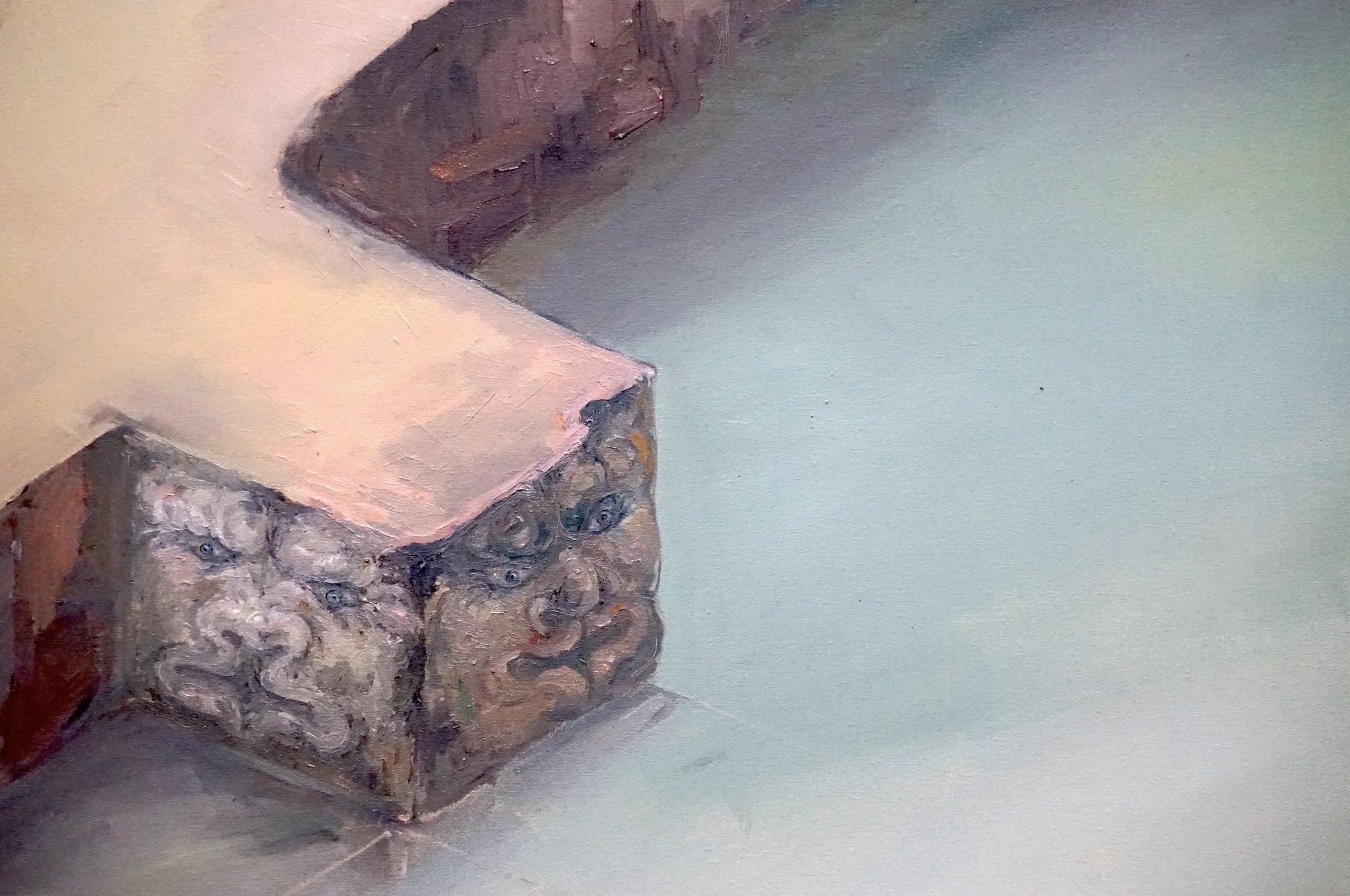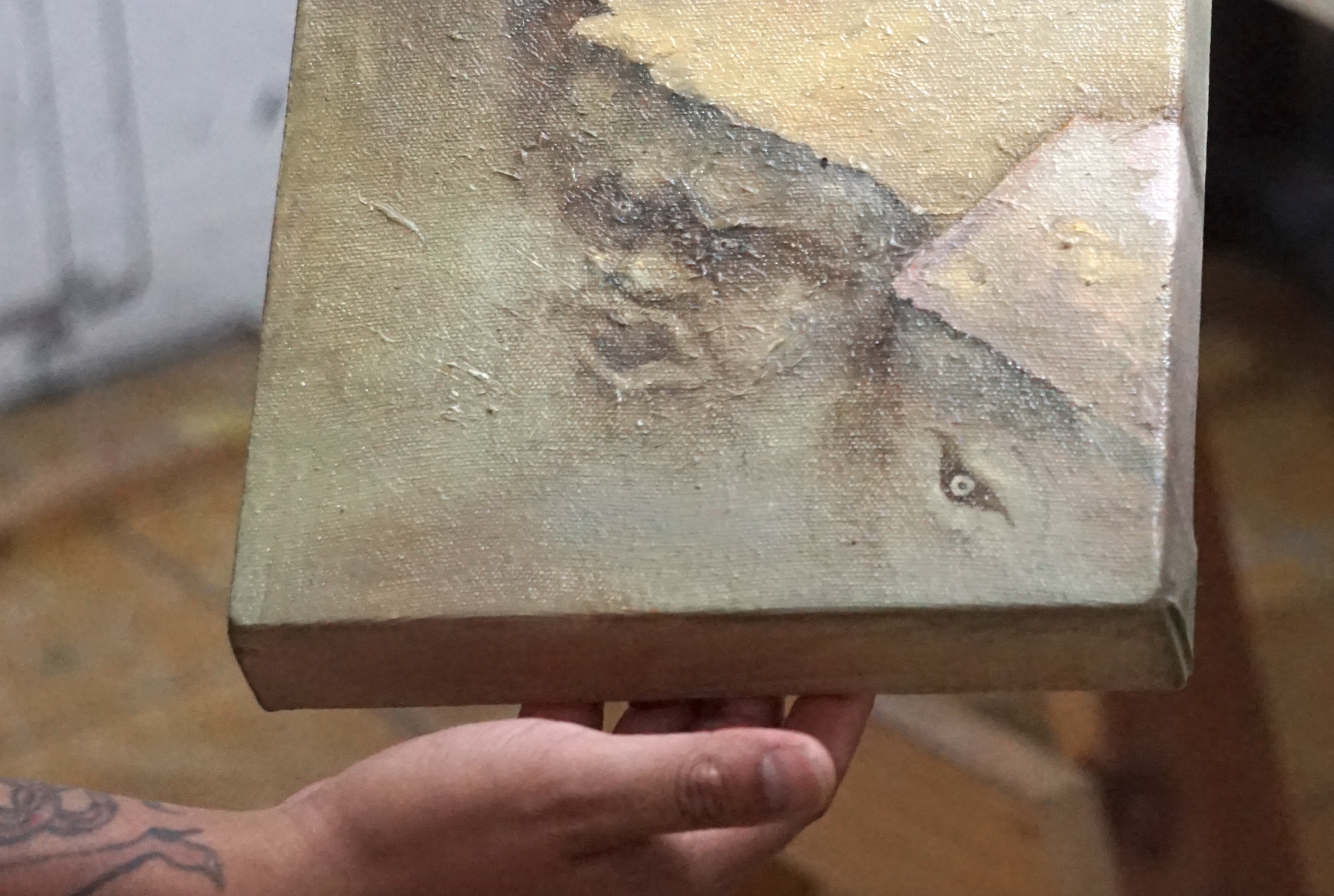
Essay
Jou Morales at Residencia 797
by Luis Muñoz
A pleasant stay is a guarantee of return*
Reading time
6 min
Over the past two decades, some have considered painting dead, while conceptual languages have “dominated” (or predominated in) the art scene in Guadalajara. Despite this, we can name some artists in whose production painting, whether in a leading or complementary manner, has not ceased to be present. Throughout this period—which I will allow myself to label, dramatically and exaggeratedly, that of “minimalist supremacy”—such artists as Rubén Méndez, Juan Bastardo, Luis Alfonso Villalobos, Edgar Cobián, Enrique Hernández, and Cristian Franco have all continued painting. Currently interest in painting is being reinforced in the city, as seen in the work of such artists of newer generations as Daniela Ramírez, Temoc Camacho, Leonardo Ascencio, and Andrea Márquez. Contributing to this dynamism is the Museo Cabañas, an important promoter of painting in the city: thus, in some of its most recent exhibitions it has shown the work of artists whose central axis is the pictorial exercise, for example María Izquierdo and Aníbal Delgado. Similarly, in recent years private galleries such as Gamma and Tiro al Blanco have promoted painting by exhibiting national and international artists: Rafa Esparza (U.S.), Alfonso González Jr. (U.S.), Jorge de León (Guatemala), and Thiago Martins de Melo (Brazil), in the case of Gamma; and Lesia Khomenko (Ukraine), Andrew Jilka (U.S.), and Roberto Turnbull (Mexico), in the case of Tiro al Blanco.

It is within this climate of renewed enthusiasm for painting that Jou Morales—an important reference in contemporary national painting and a member of Yope Projects, one of the most resonant young contemporary art projects in the country—is visiting Guadalajara for an artistic residency carried out thanks to a collaboration between the Zarur collection and Residencia 797: a project curated by the artist Enrique Hernández for the dissemination and promotion of painting.
In its years of existence, Hernández’s project has received such artists as Luis Aduna, Guillermo Estrada, Lucía Vidales, Edgar Cobián, Alejandro García Contreras, Endy Hupperich, and Leo Marz. In addition to the residency, the artists hold talks that are open to the public. For Jou’s stay, Interior 2.1, a local project space, collaborated with the Zarur collection for an edition of its “Wednesday of drawing and romantic music.”
A few weeks before his arrival in Guadalajara, Jou and I met up in his hometown, Oaxaca de Juárez, where he finally spoke to me in his own voice regarding his work. Before this meeting, my approaches to Jou had been indirect and in the most varied contexts, from project spaces with very limited budgets to a certain giant blue-chip gallery in the nation’s capital. It was thanks to the artist from Guadalajara, Leonardo Ascencio, around 2019, that I first heard on this side of the country about the work that the Yope Projects initiative was carrying out in the capital of the state of Oaxaca, and which by then already had been operating for three years. Via the artists Roberto Moreno and Emilio Morales’ exhibition space Neotortillería, in the capital of Guanajuato, I was able to have more direct contact with the productions of those artists who were also the founding members of Yope: Andy Medina, David Zafra, Gibran Mendoza, Kasser Sánchez, Jou Morales, Julio García Aguilar, and Vidal Martínez.

My first impression of Jou’s work was that it reminded me of surrealist landscapes: organic elements in his compositions made me think of Max Ernst’s painting and the architectural spaces projected in pieces by Giorgio de Chirico. For a change, European references typical of a student of Art History (since, after all, you can’t deny your manifest origin). But, at the same time, I couldn’t help but think of other references, which were much more personal and that preceded my professional training. Seeing Morales’ work brought to mind the full wall pieces made with spray paint in the days when intricate “wildstyle” was the most popular style of graffiti, dominating Mexico City’s walls and magazines.
After a walk through “el llano,” a park frequented by skaters in the center of Oaxaca, it occurred to me to ask Jou if he ever read the magazine Gorilla, published in the 2000s, which focused on the skate culture in Mexico, came with gift stickers, and whose content included both illustrations and comics from Mexico. His positive answer unintentionally provided me with the key to understanding his work’s formal proximity to surrealism: instead of making an academic effort to study European trends, one has to go back to the automatic drawing carried out by a student in their blackbook**, restless for class to end so that they can go out and paint. Jou mentions to me that before entering Oaxaca’s School of Fine Arts, he was like many young people who grew up in the 2000s in that that the graffiti magazines Virus, Ilegal Squad, Rayarte, and Blackbook were a fundamental influence on the pictorial system that he later developed through oil painting.

An interesting and characteristic feature of Jou’s work as well as of artists of his generation is the arrival at universal values via the development of particular ones: that is, via what is close, which is a reversal of the recurrent logic among previous generations of first pursuing cosmopolitan qualities or international languages in order to transcend the national panorama. The newsstand on the nearest corner, the walls of the city, as well as the CDs and stickers that came piled in a cellophane bag in magazines, are together the point “A” that precedes the museum, gallery, and newspaper art notice, which are in this case point “B.” This factor seems important to me in starting a dialogue with the younger generations of Guadalajara and in encouraging complementary searches with a basis in the immediate environment.
Translated to English by Byron Davies
The results of the residency are exhibited within the framework of the Estación Material art fair, on Thursday, November 10 from 7 to 10 PM, Friday, November 11 from 5 to 10 PM, as well as Saturday, November 12 from 11 AM to 2 PM. Beginning on Monday, November 14 visits can be made by appointment via the residency’s Instagram profile.
Bibliography:
Ashida, C. (2006). Asimétrica, afinidades y discrepancias: acciones artísticas colectivas / guadalajara 1949 - 2006. EMA Ediciones.
VV. AA. (2018). Guadalajara: Una geografía particular. Ediciones MP.
*:Legend found on the arches of Guadalajara on Avenida Vallarta: a monument built in 1938 marking the city’s limits at that time.
**: A sketchbook, according to international graffiti jargon.
Published on November 11 2022